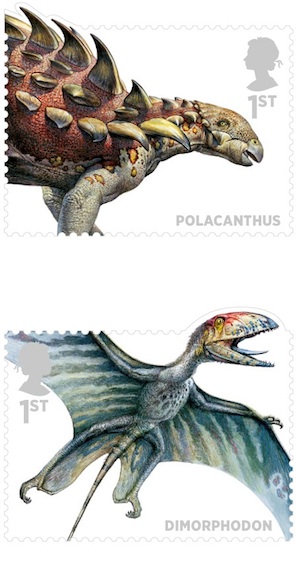
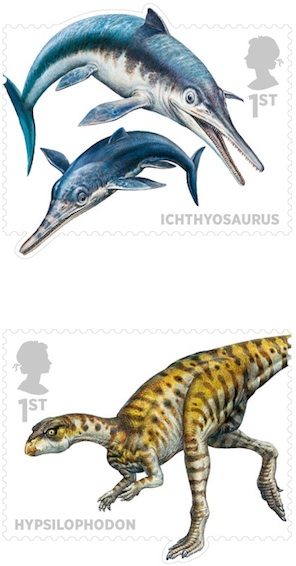
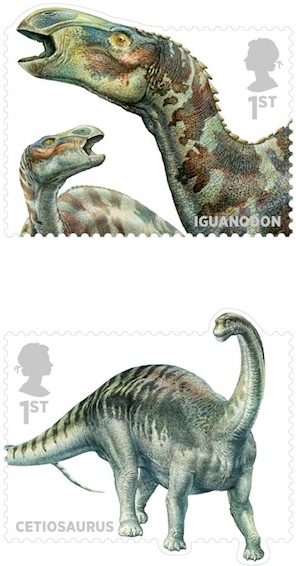
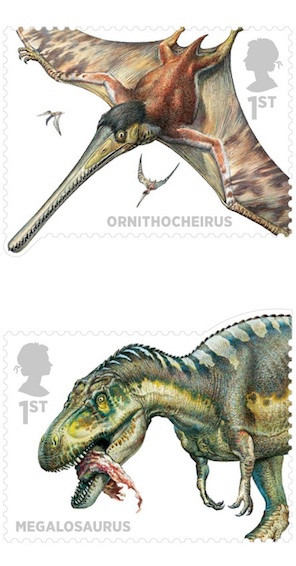
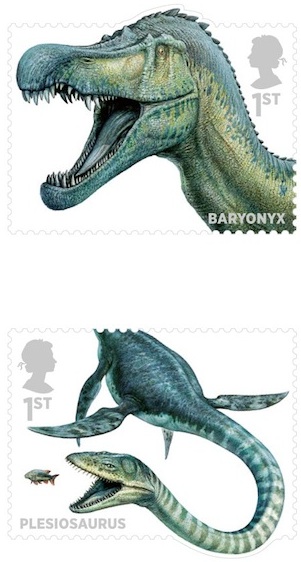





The stamps are printed in two separate sheets of 25
enabling the purchase of a vertical column of 5 of any one design
Sheet 1: Polacanthus, Icthyosaurus, Iguanadon,
Ornithocheirus, Baryonyx
Sheet 2: Dimorophodon, Hypsilophodon, Cetiosaurus, Megalosaurus,
Plesiosaurus
The stamps were designed by Why Not Associates using illustrations by
John Sibbick and are printed by Walsall Security Printers in gravure.
The self-adhesive stamps are 37 x 27mm (excluding the 'break-outs')
perforated 13.5 x 14 in sheets of 25/50 with all over phosphor.
Products issued, available from Royal Mail (we will not be stocking these):
Set of 10 stamps (2 strips of 5) --
Strip of 5 from sheet 1 or sheet 2, or vertical strip of 5 of any single
stamp
First day cover --
Presentation pack -- Stamp
cards (set of 10) - medal cover (in conjunction with the Royal Mint)
Postmarks available for the day of issue are shown here. These postmarks cannot be obtained after the date of issue. The images shown here may not be to scale.
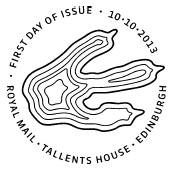
|
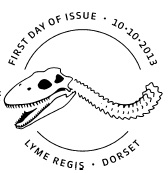
|
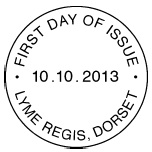
|
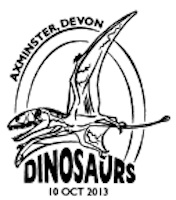
|
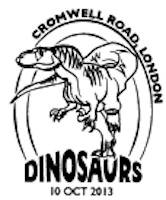 |
|
Ref FD1321TH Philatelic Bureau Official Postmark |
Ref FD1321PL Lyme Regis, Dorset Official Postmark |
Ref FD1321NP |
Ref L12967 Axminster, Devon |
Ref L12968 Cromwell Road, London |
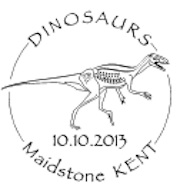 |
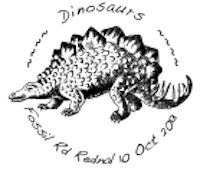
|
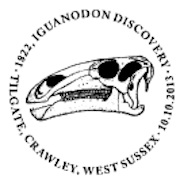 |
|
|
|
Ref L12966 Maidstone Kent |
Ref M12973 Fossil Road, Rednal |
Ref L12965 1822 Iguanadon Discovery Tilgate, Crawley, West Sussex |
If you would like to be contacted when
this page is updated please sign up on the ChangeDetection panel at
the top of the page.
If you have any questions, please email
us.
NB: all emails will be acknowledged in 1-2 days
unless we are away (see home page). If you do not receive an
acknowledgement please email us from a different address (eg hotmail,
gmail).
This page created 4 October 2013
|
|
|
|
|||
|
Norvic Philatelics, PO Box 119, Dereham, NR20 3YN, GB. UK Phone: 08450 090939 -- Skype:ian.billings-norvic |
|||||